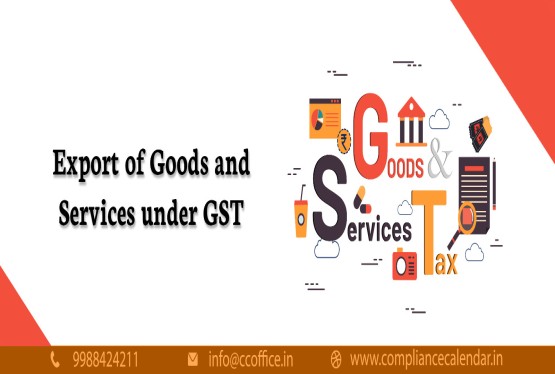Investing in stocks, mutual funds, and real estate can generate substantial profits, but these gains are subject to capital gains tax. When an asset is sold within a short duration, the profit earned is classified as Short Term Capital Gains (STCG) and taxed accordingly. The STCG tax rate varies based on the type of asset, making it essential for investors to understand the tax rules, calculation methods, and deductions available.
By employing effective tax planning strategies, such as loss set-off, long-term holding, and investment diversification, investors can reduce their tax liability and optimize returns. Understanding STCG tax rates and calculation techniques is crucial for investors and traders to maximize profits while ensuring tax compliance.
What is Short Term Capital Gains Tax (STCG)?
Short Term Capital Gains (STCG) arise when an investor sells a capital asset within a short holding period and makes a profit. The tax on these gains is known as Short Term Capital Gains Tax (STCG Tax).
Defining Short Term Capital Gains
The classification of short-term and long-term capital gains depends on the holding period of the asset:
-
Equity shares and equity-oriented mutual funds: If sold within 12 months from the purchase date, the gain is classified as STCG.
-
Debt mutual funds, real estate, gold, and other assets: If sold within 36 months, the gain is considered short-term.
Example:
-
If you buy 100 shares of XYZ Ltd. on March 1, 2024, for Rs.1,00,000 and sell them on August 15, 2024, for Rs.1,20,000, you make a short-term capital gain of Rs.20,000.
-
This gain is subject to STCG tax, which varies based on the type of asset and investor’s tax slab.
Short Term Capital Gains Tax Rates in India
The tax rate on STCG depends on whether the asset is covered under Section 111A of the Income Tax Act or not.
1. STCG on Listed Equity Shares & Equity Mutual Funds (Section 111A)
(a) A flat 15% tax rate is applied on STCG from listed shares, equity mutual funds, or units of business trusts (excluding surcharge and cess).
(b) This 15% tax is applicable irrespective of income tax slab rates.
Example: If an investor earns Rs.50,000 as STCG from equity shares, the tax liability at 15% is Rs.7,500.
2. STCG on Other Assets (Taxed as per Slab Rates)
For real estate, debt mutual funds, gold, bonds, and other non-equity assets, STCG is added to total taxable income and taxed at slab rates applicable to the investor.
Example: If an individual in the 30% tax slab earns Rs.2,00,000 as STCG from selling a property, the tax liability is Rs.60,000 (30% of Rs.2,00,000).
Note: Agricultural land in rural areas is exempt from capital gains tax.
How to Calculate Short Term Capital Gains Tax?
Formula for STCG Calculation
STCG= Selling Price−(Purchase Price+Transfer Expenses+Improvement Costs)
Components of STCG Calculation:
1. Selling Price: The price at which the asset is sold.
2. Purchase Price: The cost of acquiring the asset.
3. Transfer Expenses: Brokerage, stamp duty, registration fees, or transaction charges.
4. Improvement Costs: Any capital improvements made to the asset (not applicable for shares or mutual funds).
Example Calculation for STCG on Stocks
Scenario:
(a) Bought 500 shares of ABC Ltd. at Rs.200 per share on January 1, 2024.
(b) Sold them for Rs.250 per share on September 30, 2024.
(c) Brokerage and transaction costs: Rs.2,000.
STCG Calculation:
(a) Selling Price = 500 × Rs.250 = Rs.1,25,000
(b) Purchase Price = 500 × Rs.200 = Rs.1,00,000
(c) Expenses = Rs.2,000
Since this is equity-based, the STCG tax at 15% is Rs.3,450.
Example Calculation for STCG on Real Estate
Scenario:
(a) Purchased property in April 2022 for Rs.50,00,000.
(b) Sold it in January 2024 for Rs.65,00,000.
(c) Brokerage and legal charges: Rs.1,00,000.
STCG Calculation:
(a) Selling Price = Rs.65,00,000
(b) Purchase Price = Rs.50,00,000
(c) Expenses = Rs.1,00,000
STCG=65,00,000−(50,00,000+1,00,000) =Rs.14,00,000\text{STCG} = 65,00,000 - (50,00,000 + 1,00,000) = Rs.14,00,000STCG=65,00,000−(50,00,000+1,00,000)=Rs.14,00,000
If the seller falls under the 30% tax bracket, the tax liability will be Rs.4,20,000 (30% of Rs.14,00,000).
Tips to Reduce Short Term Capital Gains Tax Liability
1. Opt for Long-Term Holding: Holding equity investments for more than 12 months and real estate for over 36 months qualifies for long-term capital gains tax (LTCG), which has lower tax rates.
2. Set Off STCG with Capital Losses:
(a) Short-term capital losses can be offset against STCG in the same financial year to reduce tax liability.
(b) Unutilized capital losses can be carried forward for up to 8 years to set off against future capital gains.
3. Invest in Tax-Saving Schemes: Investors can reinvest STCG proceeds into tax-efficient investment options like tax-free bonds, NPS, or ELSS funds to minimize overall tax outflow.
4. Claim Expenses Related to Transactions: Brokerage fees, legal fees, stamp duty, and transfer charges can be deducted when computing STCG, reducing taxable gains.
5. Use Income Tax Exemptions & Deductions
(a) If total taxable income (including STCG) is below the basic exemption limit, no STCG tax is payable.
(b) Senior citizens and individuals with income under Rs.2.5 lakhs (or Rs.3 lakhs for senior citizens) benefit from this rule.
Short Term Capital Gains vs. Long Term Capital Gains
|
Feature |
Short Term Capital Gains (STCG) |
Long Term Capital Gains (LTCG) |
|
Holding Period |
|
>12 months (equity), >36 months (other assets) |
|
Tax Rate |
15% (for equity) or as per tax slab |
10% (above Rs.1 lakh for equity), 20% (with indexation for other assets) |
|
Indexation Benefit |
Not available |
Available for non-equity assets |
|
Loss Set-Off |
Can be adjusted against STCG |
Can be adjusted against LTCG |
Conclusion
Short Term Capital Gains Tax (STCG) is an important consideration for investors involved in stocks, mutual funds, and real estate transactions. While STCG on equity investments is taxed at 15%, gains from other assets are taxed at applicable slab rates. Understanding STCG calculation methods, tax-saving strategies, and exemptions can help investors minimize tax liabilities and maximize profits.
By planning investments strategically, using tax exemptions, and utilizing loss set-offs, individuals can ensure efficient tax management while growing their wealth.
Frequently Asked Questions
Q1. What is Short Term Capital Gains Tax (STCG)?
Ans. STCG tax is levied on profits earned from selling capital assets like stocks, mutual funds, or real estate within a short holding period.
Q2. What is the STCG tax rate for equity shares and mutual funds?
Ans. STCG on listed equity shares and equity mutual funds is taxed at a flat 15% under Section 111A of the Income Tax Act.
Q3. How is STCG on real estate and debt mutual funds taxed?
Ans. STCG from real estate, debt mutual funds, and other assets is added to total income and taxed as per the investor’s income tax slab.
Q4. Can STCG tax be reduced or avoided?
Ans. Investors can reduce STCG tax by setting off short-term capital losses, holding assets for the long term, and using tax-saving investments.
Q5. Are there exceptions available for STCG tax?
Ans. No specific exemptions apply to STCG tax, but individuals with total income below the basic exemption limit do not have to pay STCG tax.









_crop10_thumb.jpg)

















































































_for_FY_2025-26_crop10_thumb.jpg)












_learn_crop10_thumb.jpg)








_Filing_Due_Dates_for_FY_2024-25_learn_crop10_thumb.jpeg)










